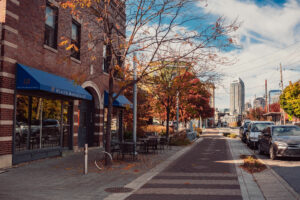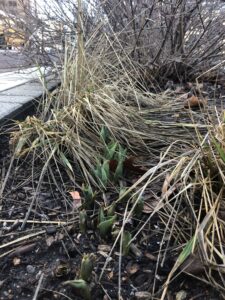Gardening and plants might be a touch depressing in January at first glance. A closer look and tweak of perspective makes all the

difference in January and February. January weather makes for a great time to observe the winter interest of plants.
What is interest? Well it is a flowery (pun intended) language for elements that are unique or amplified in winter.
My favorite example is the shape of tree without leaves, sometimes referred to as the tree’s “form.”
Take notice:
- Does the tree have a lot of small branches or only a couple huge ones?
- Does the tree have a “V” shape or an oval shape?
- Are the branches orderly and straight or chaotic and seemingly random?
- Is it symmetrical or lopsided?

Another common example of winter interest is the dried plant material from the season. Once the air turns crisp and cold, the plants will harden off. For many grasses, this creates a dry rustle in the breeze. Dried flowers put on one last display; hydrangeas, sedums and yarrow will all hold shape throughout the year giving a nice patina to the space.
Sometimes, leaves simply need to get out of the way to allow you to truly view a plant’s seasonal cycle. Berries that are revealed once leaves fall and hollies, chokeberries and crab apples are all great examples of this. Bark texture is also an under appreciated aspect of winter time gardens; oak leaf hydrangeas and paperbark maples are great examples of this.
It’s clearly a more subtle time for the garden in January, but its still a great time if you are willing to appreciate the cycles. This is also a very important time for plants as they use these “chilling hours” to reset and recharge and prepare for the growing season which will be here before we know it!
Stay warm and happy observing!
-Ethan Hochstein, Director of Landscape and Horticulture